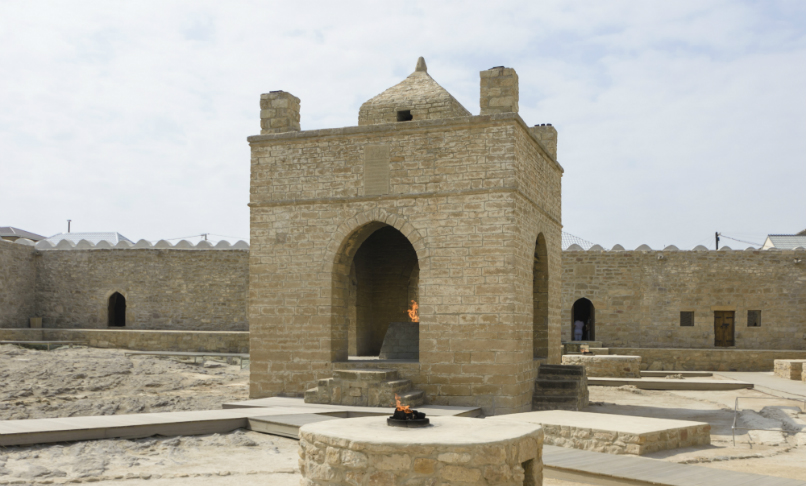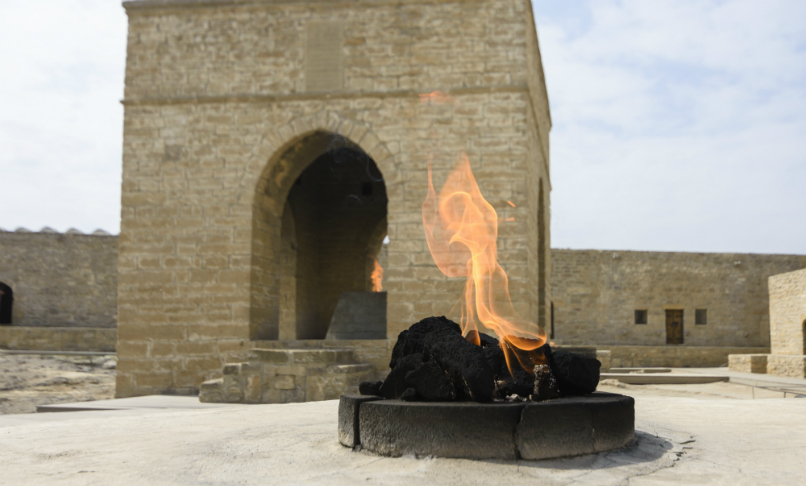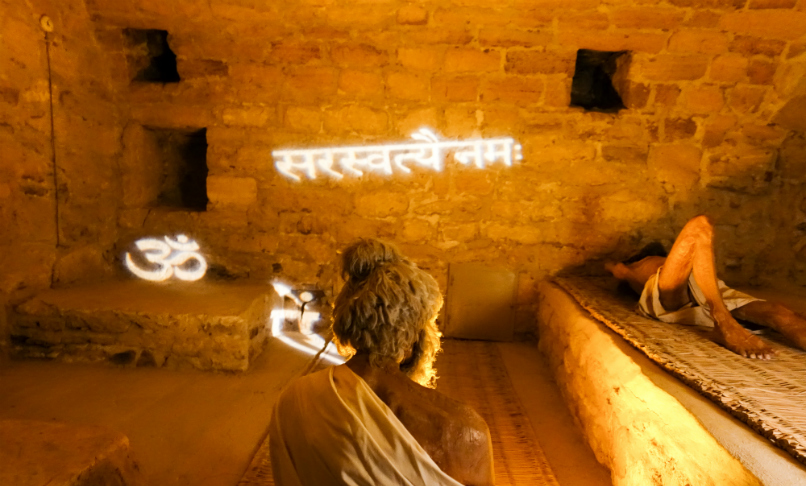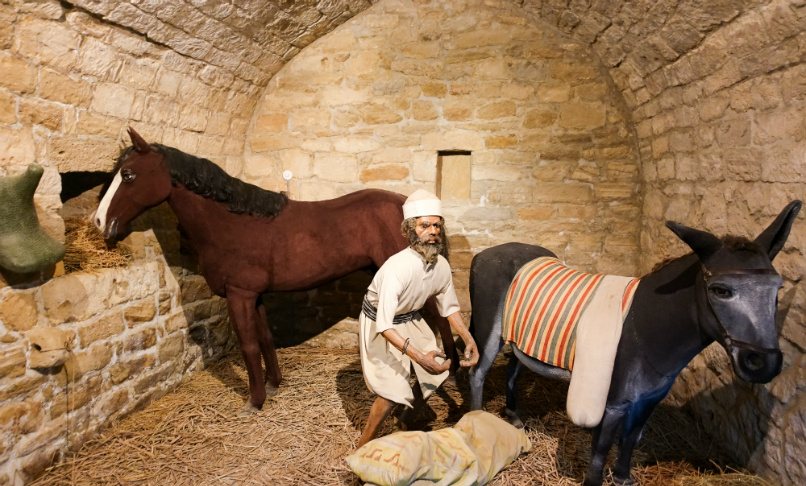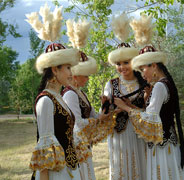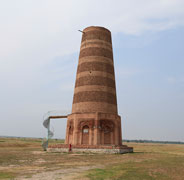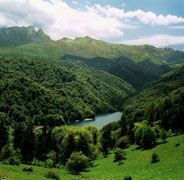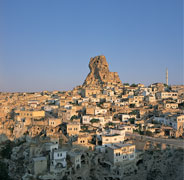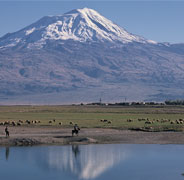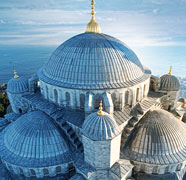Ateshgah
The Baku Ateshgah, also known as the "Fire Temple of Baku" ("atash" is the Persian word for fire.) is a religious temple in Surakhani, a suburb of Baku, Azerbaijan.
Based on Persian and Indian inscriptions, the castle-like structure was used as a Hindu and Zoroastrian place of worship. The pentagonal complex, which has a courtyard surrounded by monks’ cells and a tetrapillar-altar in the middle, was built during the 17th and 18th centuries.
The Baku Ateshgah was a pilgrimage and philosophical centre for Zoroastrians from the Indian subcontinent, who were involved within trade in the Caspian Sea area along the routes from India to the north. The four holy elements of their belief were: ateshi (fire), badi (air), abi (water), and heki (earth).
The complex was abandoned after 1883 when oil and gas plants were established in the vicinity, ending the flow of natural gas to the temple and extinguishing the holy fire. It was turned into a museum in 1975 and the annual number of visitors is around 15,000.

